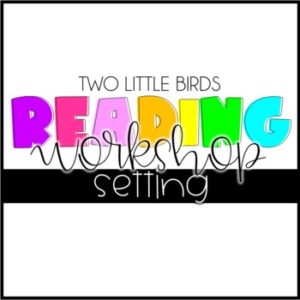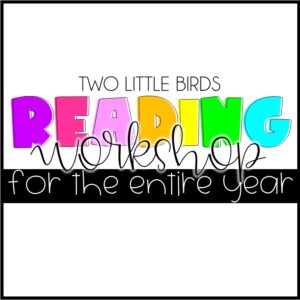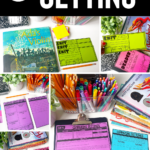When reading a story, one of the most important aspects is the setting. It is oftentimes overlooked by students as they tend to focus more on the characters or the plot. The setting can help to create the mood and tone of the story. It can also help to engage your students in their reading as the setting truly affects every other part of the story.

The setting influences the characters and their personalities and affects the plot in many ways. The setting provides a place for the characters to create their stories and it helps strengthen students' understanding of the other story elements.
For students to completely understand the characters and events in a story, they must understand the importance that the setting plays. The setting can affect the characters internally and externally. The setting can help set the mood or the feeling in the story and help students make connections. Students learn to pay attention to the “when” and “where” as they read and make inferences about the text.
Here are 5 lessons to teach when you are helping students understand the importance of the setting in a story:
1. Determining the Setting
One of the most important things you'll want to do as a teacher when helping students understand the setting is to help them determine where and when the story is taking place. This can be done by asking questions such as:
- What does the environment look like?
- What type of weather is happening?
- Are there any specific holidays or events happening?
- What year is it?
- Is it during the day or at night?
Once you've helped students understand where and when the story is taking place, they'll be better able to visualize the story and understand how it affects the characters and plot.
2. How the Setting Can Affect the Story:
The setting is more than just the location and time of a story. It can also affect the plot and characters in many ways. For example, if the story is set in a cold environment, the characters might be forced to stay inside and deal with their problems, as opposed to going on an adventure. Or, if the story is set in a hot environment, the characters might be constantly dealing with things like dehydration or sunburn.
In addition to the physical setting, it's important to understand the social setting of a story. This includes everything from the culture of the characters to the laws and customs that are in place. Teaching students about the social setting can help them better understand why characters behave in certain ways and make the decisions that they do.
3. Describing the Setting:
One of the best ways to help students understand the setting is to have them describe the setting with words. Ask them to think about what the weather is like, what the landscape looks like, what the people in the setting are wearing, and what the social conditions look like. You can also ask them to describe the emotions that the setting elicits. For example, if a story is set in a cold environment, the students might feel tense because of the chilly weather.
4. Comparing Settings:
One way to help students understand the importance of setting is to have them compare and contrast different settings. This can be done in a variety of ways, such as writing about the setting, creating charts or diagrams, or even acting out scenes from different stories.
By comparing and contrasting different settings, students can see how the setting can affect the plot, characters, and overall tone of a story. For example, if you are comparing a story that is set in the city with one that is set in the country, you might want to focus on things like:
- The environment (urban vs. rural)
- The culture (sophisticated vs. simple)
- The social dynamics (close-knit community vs. anonymous city)
- The physical surroundings (tall buildings vs. wide open spaces)
Comparing and contrasting settings can help students develop a deeper understanding of what makes a story unique and interesting. It can also help them better appreciate the role that the setting plays in shaping a story.
5. Writing About the Setting:
When writing about the setting of a story, it can be helpful to think about the following questions:
- What is the most important thing about the setting in relation to the story?
- What is the mood or feeling that the setting evokes?
- How does the setting help to create the tone of the story?
When a story is set in more than one location, it can add an extra layer of complexity to the plot. For example, a story might take place in both the present and the past, or in two different parts of the world. By comparing and contrasting the different settings, students can get a better sense of how each location affects the characters and the overall story.
In order to help students understand multiple settings, you can use graphic organizers like Venn diagrams or chart paper. You can also have students create their own maps or illustrations that show the different locations in the story.
Teaching setting is an important part of helping students understand the elements of a story. Teaching about the setting can help students better understand not only the stories they are reading but also their own lives. What are some ways that you have helped your students understand the setting in a story?












